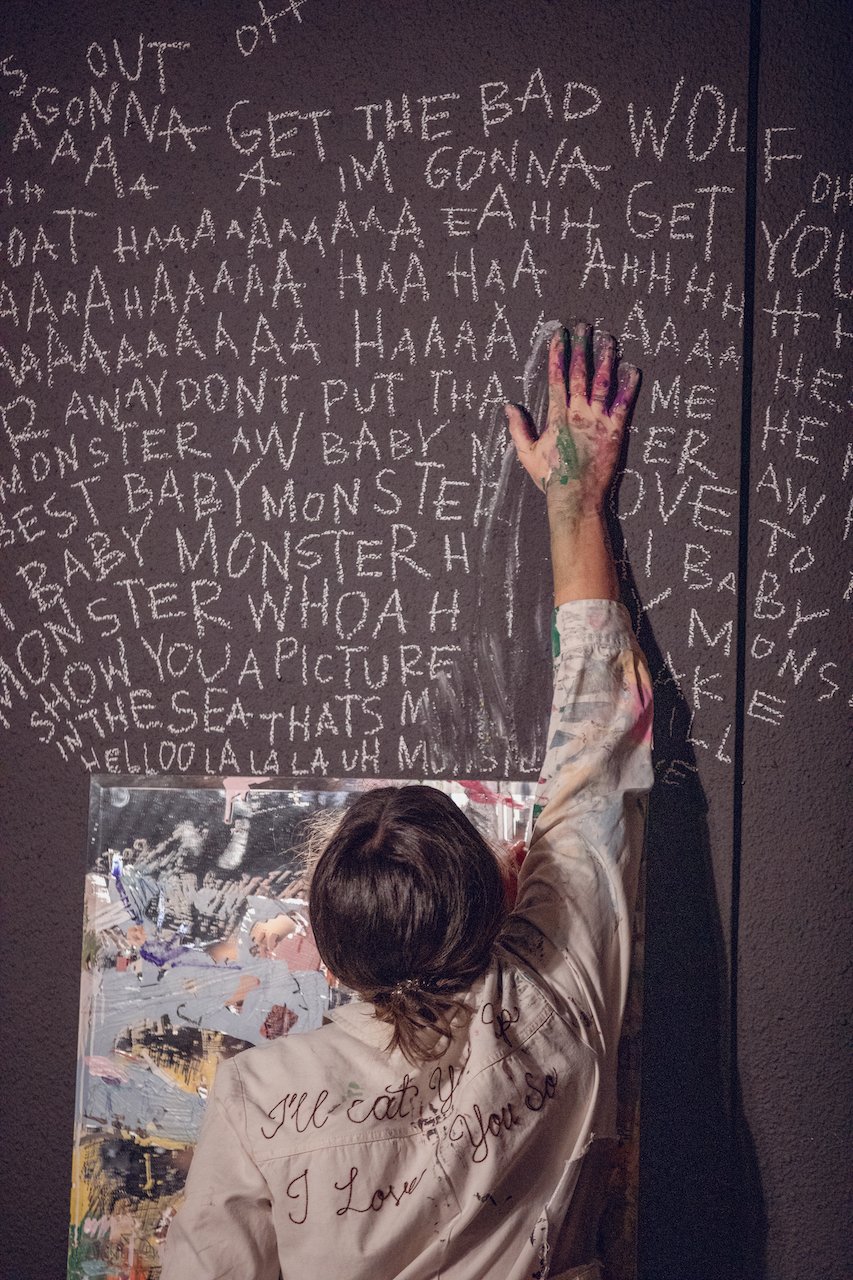About
Monster, Mirror, (M)Other
Performance, costume, sound, mirror paintings, wall markings, 2023
“On close inspection, all literature is probably a version of the apocalypse... on the fragile border where identities do not exist or only barely so.”
— Julia Kristeva, Powers of Horror
“The process of becoming a mother... may arguably last a lifetime.”
— Dr. Aurelie Athan
Monster, Mirror, (M)Other continues my practice of using text as a conceptual framework for painting and performance, creating a participatory space between myself and the viewer. To counteract the idea of maternal self-sacrifice, I collaborate with my children, using them as mark-making tools and gathering “text” from our daily life—memories, sounds, photographs, and gestures. In doing so, I explore the psychic shifts of motherhood alongside the developmental changes of my children, merging art-making and maternal experience.
Loosely inspired by Where the Wild Things Are by Maurice Sendak, the work reflects on the monster as a metaphor for chaos and transformation. Through matrescence, my sense of meaning and truth has been unraveled and reformed, pushing language, form, and the body toward absurdity and non-sense. In meeting this “monster,” I encounter both collapse and creation — a shared becoming between mother and child, a making of meaning through touch, memory, and imagination.
All photo credits: Anna Newman




















